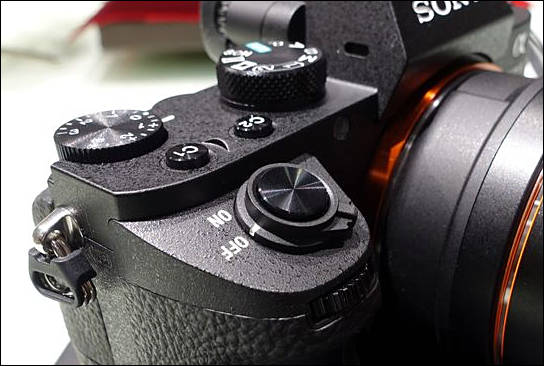
It allows to keep PV going, with more focus towards AI, but keeping be one of the few truly independent places.
-
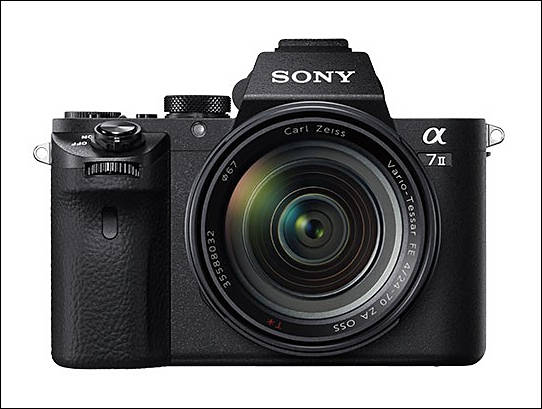
New things
- 5 axis stabilization:
- Improved, hybrid AF:
- Minor ergonomics changes
- 50Mb XAVC S codec
- S-Log2
Info

 rose83.jpg542 x 409 - 34K
rose83.jpg542 x 409 - 34K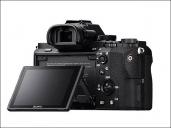
 rose84.jpg627 x 470 - 36K
rose84.jpg627 x 470 - 36K
 rose85.jpg773 x 539 - 45K
rose85.jpg773 x 539 - 45K -
PR
World’s first full-frame camera with optical 5-axis image stabilization
Detects and corrects various camera shake along five axes for still images and video, including angular shake (pitch and yaw) that tends to occur when shooting with a telephoto lens, shift shake (along the X and Y axes) that becomes noticeable as photographing magnification increases, and rotational shake (roll) that often affects shots at night or when recording video. The full-frame image sensor moves to compensate for these kinds of camera shake. For still images, stabilization is equivalent to up to 4.5 steps faster shutter speed of correction.
Optical 5-axis image stabilization ideal for a variety of α lenses
Handheld low-light shooting at slower shutter speeds becomes possible, allowing for greater creativity and mobility without the need for a tripod. The camera’s in-body image stabilization is therefore effective even in combination with E-mount lenses without Optical SteadyShot (OSS). For A-mount lenses as well (using an optional mount adapter such as LA-EA4 or LA-EA3), camera shake is compensated for along five axes within the camera body. Users can thus make the most of the beautiful rendering power of various α lenses with the α7 II.
Verify image stabilization results with live view functionality
Monitor the corrected image in real-time on the camera’s LCD screen or in the OLED viewfinder, thus allowing for fine-tuned framing and focusing even when using a telephoto or macro lens.
Speedy, accurate autofocus with Fast Hybrid AF
Wide AF coverage with the employment of a 117-point focal plane phase-detection AF sensor (in combination with a 25-point contrast detection AF points)
117-point focal plane phase-detection AF sensor and 25 contrast detection AF points are placed over a wide area of the screen, making use of the superb tracking capabilities of the phase detection AF and therefore enabling clear capture of moving subjects that might otherwise evade focus.
30% faster AF responsiveness
A more advanced algorithm is used to detect the subject position, enabling optimal lens drive. In a variety of scenarios, autofocus is very responsive – 30% faster than in previous models.
1.5 times the tracking ability of previous models4 with an improved motion-prediction algorithm An improved, original Sony algorithm for the prediction of moving bodies results in a 1.5 times improvement in performance in tracking a subject and predicting its next movement. Additionally, AF and automatic exposure (AE) continue to track the subject during high-speed continuous shooting (up to 5 fps), so that a sudden movement or expression of the subject is never missed. Finally, greatly improved tracking ability and subject capture are made possible through the advances in image analysis technology with “lock-on AF,” a feature that optimizes focusing on the subject in accordance with its size.
Superior image quality and enriched video recording functionalities with the full-frame sensor and BIONZ XTM image processing engine
35 mm full-frame Exmor CMOS sensor for high resolution and sensitivity, with minimal noise The camera is equipped with a full-frame Exmor CMOS image sensor with approximately 24.3 effective megapixels. High resolution and larger pixels enhance sensitivity and reduce image noise to release the full potential of lens’ optical performance. Images are rendered beautifully and bokeh effects attainable only with full-frame sensors become possible.
BIONZ X image processing engine for superb detail and natural textures, less noise
Loaded with an advanced BIONZ X image processing engine. The fast processing enabled by this engine enhances images in several ways, through “detail reproduction technology,” which recreates natural-looking textures even in the minute details of an image; “diffraction-reducing technology,” which prevents loss of detail when aperture stopped down; and “area-specific noise reduction,” which greatly reduces noise while maintaining exceptional detail and texture even under low light conditions such as night time and indoors.
Supports high bit rate XAVC-S recording
In addition to recording in AVCHD Ver. 2.0 Full HD (1920×1080) 60p (50p)/60i (50i)/24p, the camera records in XAVC-S, a consumer format derived from the professional XAVC format. This offers outstanding Full HD video quality at a high bit rate of 50 Mbps. Long GOP compression is used, targeting differences between frames, along with the MPEG-4 AVC/H.264 codec for video. Regarding audio recording, linear PCM is used and files are saved in the MP4 format.
Full-featured video recording that suits professional workflows
Picture profiles enable convenient in-camera tone adjustment. The α7 II also supports the S-Log2 gamma function, which preserves a wide dynamic range, and a wide S-Gamut mode. Other features include Time Code/User Bit (useful in editing), Rec Control (for synced recording with compatible external recorders), marker display/settings, and dual video recording.
Enhanced usability and reliability
Grip shape and height keep the camera steady even when using a large telephoto lens. The shutter button has been shifted toward the front, to a position that feels more natural. This, along with the button’s increased size, helps reduce camera shake. Shooting comfort and convenience were a priority in design. Ten customizable buttons can be assigned to any of 56 functions. The tilting display features a White MagicTM LCD screen for exceptional visibility even under bright sunlight.
Sharp, high-contrast XGA OLED Tru-Finder™ viewfinder for accurate previewing
An XGA OLED Tru-Finder viewfinder with a 2.36 million dot equivalent resolution and high contrast, enabling faithful reproduction of setting adjustments, fine-tuned focusing using magnified display or peaking features, and bokeh effects. The viewfinder also allows for clear review of previous shots. Because the camera is fully APS-C-compatible, it displays the entire view even when APS-C lenses are used.
Reliability that professionals can appreciate
Sturdy magnesium alloy construction of the top, front cover, and internal structures ensures that the camera is both durable and light. The robust mounting structure easily handles large telephoto lenses, heavy video lenses, and many others.
Main buttons and dials are also sealed to help keep out moisture and dust, and an interlocking double layered construction of media and port covers as well as body seams ensures greater moisture and dust resistance. Overall, the camera is designed to be used by photographers in any number of situations without having to worry about the safety of their cameras.
Quick startup time – 40% fasterer
After the camera is switched on, it is ready to shoot 40% sooner than current models.
Wi-Fi and NFC enabled for connectivity with mobile devices; support for PlayMemories Camera Apps that allow the camera to evolve even further
– Wi-Fi and NFC connectivity for mobile linking – Features can be expanded with PlayMemories Camera Apps
-
Geezus, that is freaking amazing! I can't wait to see the a7S II. Video-centric a7S with 5-axis would be killer!
-
I thought the A7s came out not too long ago? Sony is on fire and knows how to pull the purse strings. Hope they improved the global shutter over the A7s.
24 megapixels it says. I guess the A7s will stay the low light king until they release V2.
-
At 24 mpx I'm afraid it'll have even more RS than the A7S, which is already poor…
The use of a super stabilizer will certainly help with skew in handheld footage, but what about moving objects?
And if they still cripple the output to 4:2:0 and 8 bit, it will be a shame!
-
It's just like Canon's incremental improvement strategy, but on hyper-drive. So rolling shutter improvement, 100Mb XVAC, 10 bit output, 4K internal, 8K 10 bit output...and on and on. If you improve, they will buy.
-
Ok sony is starting to make my switch from Panasonic a little more easier.
-
Nice placement on the trigger, but record button is still a bummer.
-
The use of a super stabilizer will certainly help with skew in handheld footage, but what about moving objects?
We also do not know how it will behave after heat will accumulate.
-

 rose86.jpg800 x 532 - 134K
rose86.jpg800 x 532 - 134K -
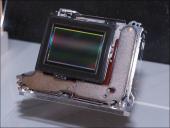
 rose91.jpg784 x 590 - 72K
rose91.jpg784 x 590 - 72K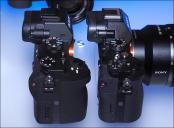
 rose87.jpg792 x 581 - 65K
rose87.jpg792 x 581 - 65K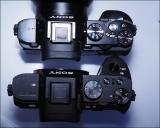
 rose88.jpg728 x 583 - 58K
rose88.jpg728 x 583 - 58K -
What's the native ISO for S-log2? I hope it's not 3200 as in A7S
-
I love the look of the redesigned grip. Looks like it'll fix one of my biggest ergonomic complaints about the A7 series... though it's astounding that they still haven't moved the video record button.
Also, full frame mirrorless with 5 axis? Yes, please.
I look at this, announced just barely over a year after the release of the A7 and how much it's improved... and compare it with the 7D Mark II which came a full 5 years after the original 7D and I'm that much more tempted to just sell off the rest of my Canon gear.
-
Any chance the promo forgot to mention 120p mode?
-
Any chance the promo forgot to mention 120p mode?
:-) Manufacturers do not forget about such things.
-
IDEA: This camera uses an E-mount right? So for extra good low light you could combine a medium format lens (e.g. Pentax 645), a simple lens mount adapter, plus a focal reducer like a Metabones Speedbooster to achieve extra light! Although the ultra thin DOF would be silly for most narratives or documentary. Might look good with an F2.8 or F4 lens though.
-
Speed boosting a 75/2.8 or 55/2.8 MF lens seems like a very expensive and clunky way to achieve what could be done by just buying a 50/1.4 or 35/1.4 35mm lens with no booster.
-
Great. Now can someone add a line of code to my a7mk1 & unlock S - log?
-
I like how sony is trying to improve camera technology...don't get me wrong, but in the other hand I don't like the way or timing they are doing this, for example the a7 is almost a year old only!, what is going to happen to all of us who already spent money buying a7/a7r/a7s? why Sony doesn't work more in order to improve these cameras with new firmware/codecs/, sony a7s 4k in camera for example etc etc, work hard to release new lenses, expensive and cheap ones...., our cameras now worth a lot less. This is the sony way I guess and we have to live with it or go back to Canon, NIkon, Panasonic..., Sony attract more new customer but pissed off the ones that just moved to sony already!
-
Differences from a7s in video performance? I think it will not have the same high iso performance, right? Cause a7s has 12mpx, maybe it helps for low light situations..
Anyway looks Olympus has a problem.
-
The question for me is not does full frame, stabilized, slog 1080p video, beat 4k APS-C non log video or 4k 4/3 v-log video. They will all probably take turns beating the other in one the shooting situation or another.
The question for me is which manufacture to invest in for the next 5-10 years. On that basis, I believe the Sony E-mount will provide the best case scenario for keeping the investment I need to make in lens relevant.
The A7 II will make a great b-camera when there is an A7s II hopefully with IBS and on board 4k recording.
Anyway, what I really want is not available yet, but when it is just want to just buy the body and use the lens and gear I already own with it at that point.
I also think A7 II will be good enough to get the job done in the mean time.
-
It will be good camera for guys who like to make cinematic weddings, I think. Put old cheap prime on it and you get the good mostly stable picture. Especially considering that small gimbals will be plenty soon.
Ordinary people usually do not notice all this little differences in picture and do not see noise until it is severe.
-
I was thinking for low budget indy film production as well. With old fast primes you can deemphasize the background so less can be spent on the perfect set. Also, if it can approximate (with in reason) a stabilized gimbal shot, shooting covertly in public places with be easier to accomplish with a minimal setup drawing less attention. I'm also hoping the IBS will make gimbal shots even more stable, but it might be just the opposite and fight against what the gimbal is doing, I suppose.
-
As for those 'cinematic weddings' slap a Nikkor 50/1.8 AI/S on this sucker and call it a day.
-

 z_inside10.jpg544 x 366 - 38K
z_inside10.jpg544 x 366 - 38K
Howdy, Stranger!
It looks like you're new here. If you want to get involved, click one of these buttons!
Categories
- Topics List23,992
- Blog5,725
- General and News1,354
- Hacks and Patches1,153
- ↳ Top Settings33
- ↳ Beginners256
- ↳ Archives402
- ↳ Hacks News and Development56
- Cameras2,367
- ↳ Panasonic995
- ↳ Canon118
- ↳ Sony156
- ↳ Nikon96
- ↳ Pentax and Samsung70
- ↳ Olympus and Fujifilm101
- ↳ Compacts and Camcorders300
- ↳ Smartphones for video97
- ↳ Pro Video Cameras191
- ↳ BlackMagic and other raw cameras116
- Skill1,960
- ↳ Business and distribution66
- ↳ Preparation, scripts and legal38
- ↳ Art149
- ↳ Import, Convert, Exporting291
- ↳ Editors191
- ↳ Effects and stunts115
- ↳ Color grading197
- ↳ Sound and Music280
- ↳ Lighting96
- ↳ Software and storage tips266
- Gear5,420
- ↳ Filters, Adapters, Matte boxes344
- ↳ Lenses1,582
- ↳ Follow focus and gears93
- ↳ Sound499
- ↳ Lighting gear314
- ↳ Camera movement230
- ↳ Gimbals and copters302
- ↳ Rigs and related stuff273
- ↳ Power solutions83
- ↳ Monitors and viewfinders340
- ↳ Tripods and fluid heads139
- ↳ Storage286
- ↳ Computers and studio gear560
- ↳ VR and 3D248
- Showcase1,859
- Marketplace2,834
- Offtopic1,320








